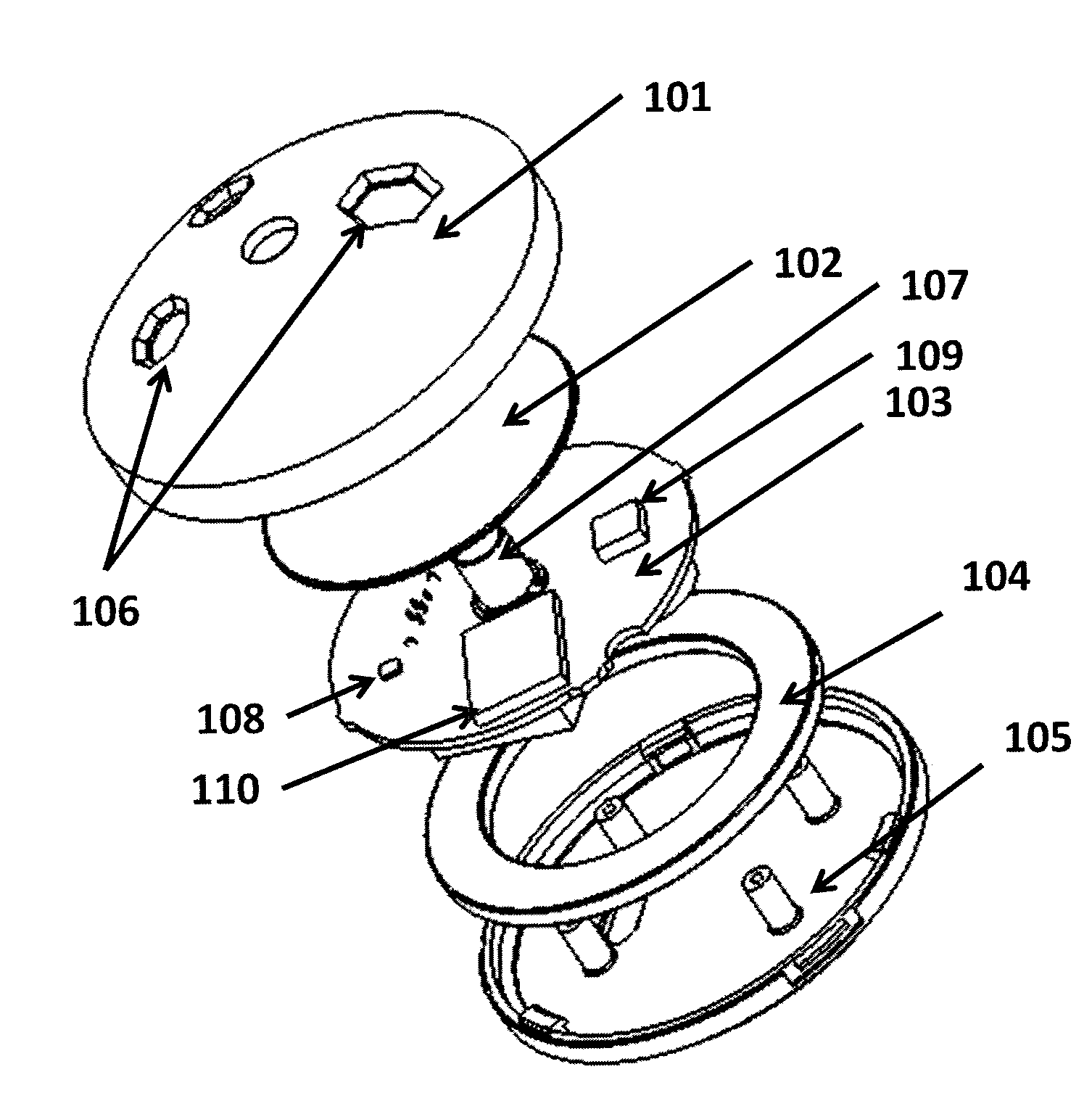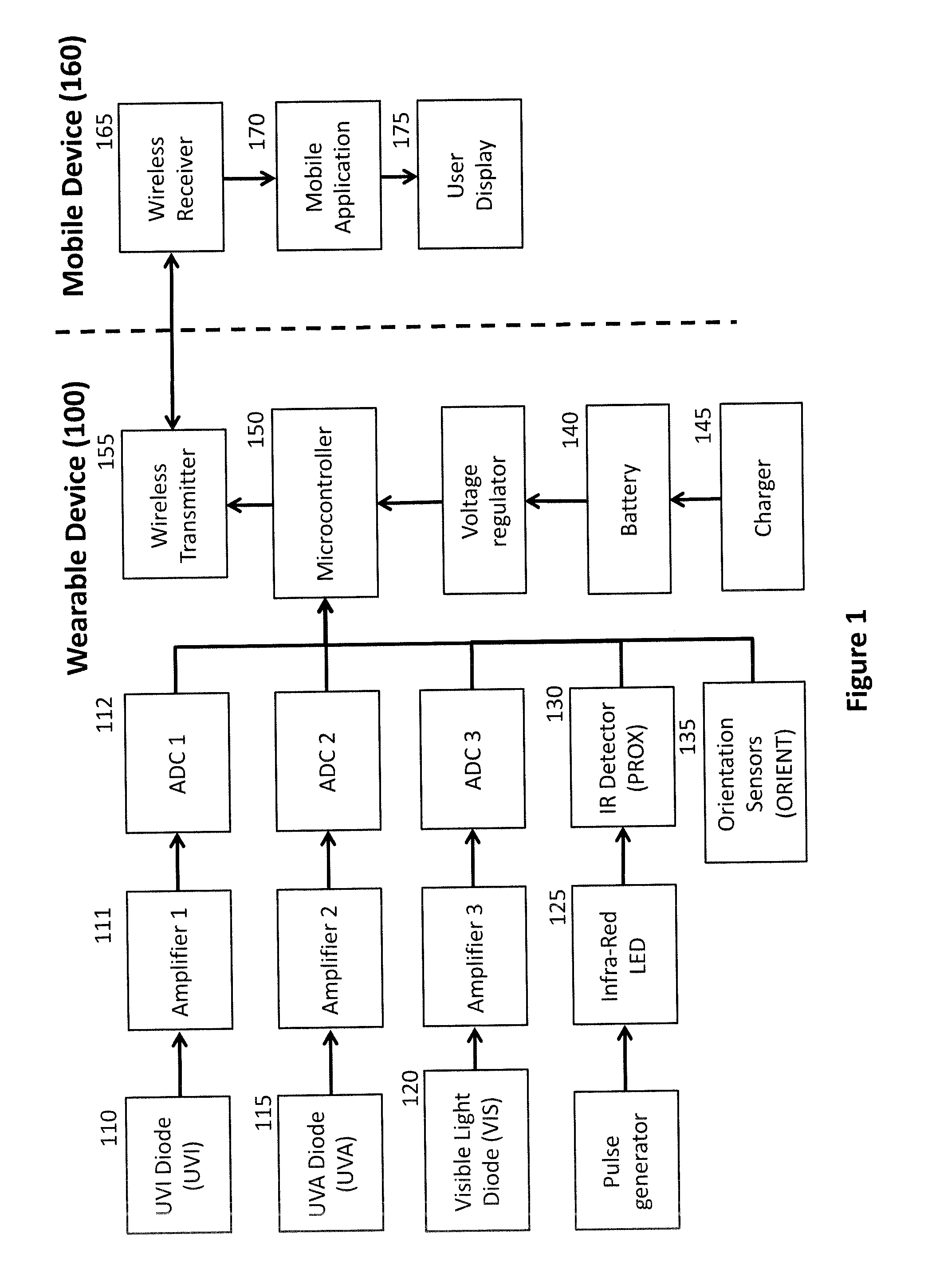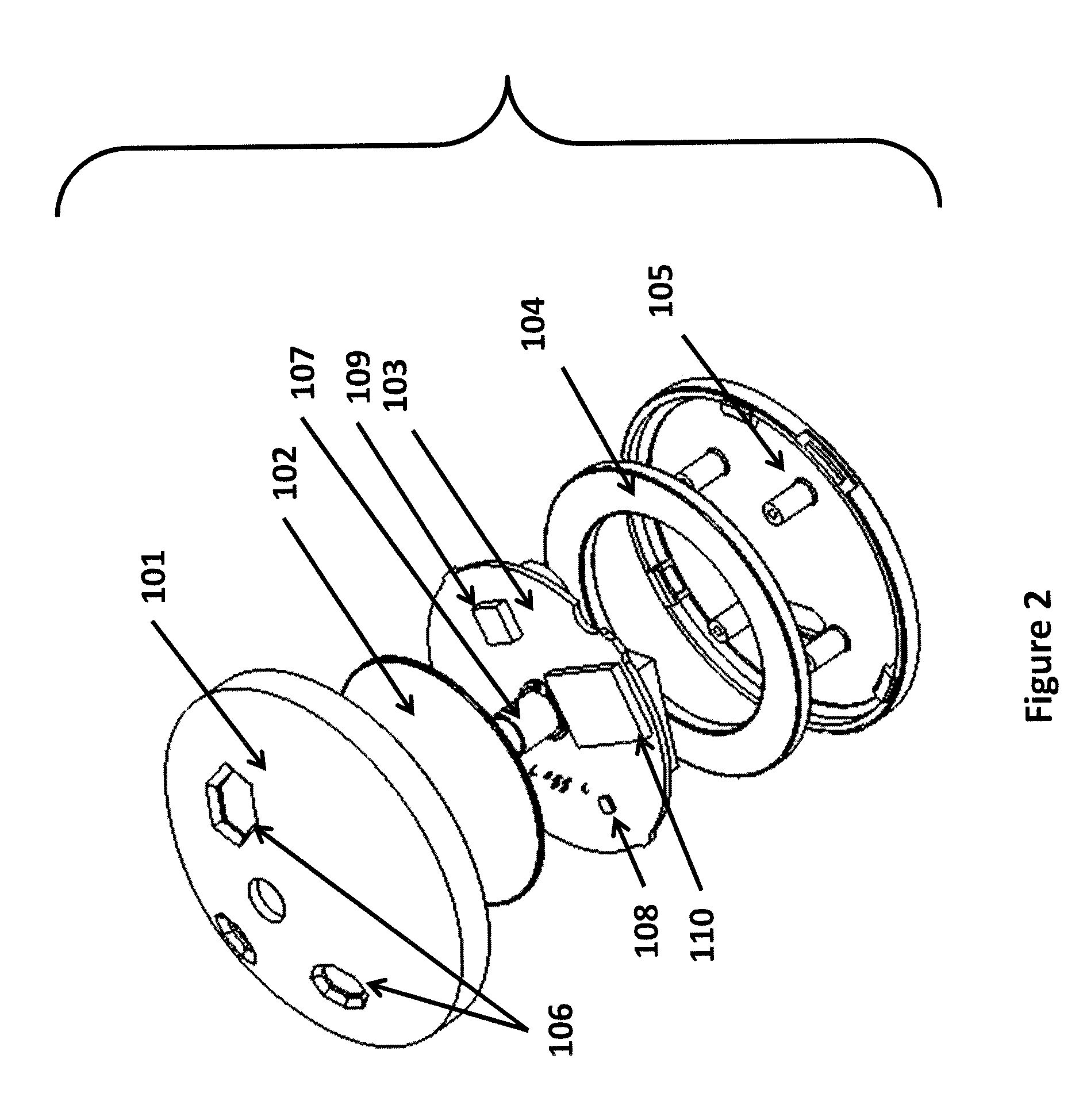Methods, systems, and apparatuses for accurate measurement and real-time feedback of solar ultraviolet exposure
a technology of solar ultraviolet and measurement method, applied in the direction of optical radiation measurement, photometry using electric radiation detector, instruments, etc., can solve the problems of not being accurate in a wide variety of situations, triggering symptoms in lupus patients, and having a different impact on human physiology. , the effect of less energy
- Summary
- Abstract
- Description
- Claims
- Application Information
AI Technical Summary
Benefits of technology
Problems solved by technology
Method used
Image
Examples
Embodiment Construction
[0102]The disclosure relates generally to methods, systems, and devices for UV sensing and estimation.
[0103]FIG. 1 is a block diagram of an exemplary system that can be adapted for accurate measurement and real-time feedback of ultraviolet exposure, and can incorporate any of the methods herein. The system in FIG. 1 includes two sub-systems. The first subsystem is wearable device (100). Wearable device 100 includes a plurality of light sensors—a UV Index (“UVI”) diode (110), a UVA diode (UVA) (115), a visible light diode (VIS) (120), an infra-red LED (125) coupled with an infra-red detector (PROX) (130). Additionally, the wearable device also includes one or more orientation sensors (ORIENT) (135) capable of determining the orientation of the wearable device in space. Sensors 110, 115, and 120 are in communication with a microcontroller (150) via one or more transimpedance amplifiers A1-A3, respectively (111), which itself is powered by an on-board battery (140). The battery is capa...
PUM
 Login to View More
Login to View More Abstract
Description
Claims
Application Information
 Login to View More
Login to View More - R&D
- Intellectual Property
- Life Sciences
- Materials
- Tech Scout
- Unparalleled Data Quality
- Higher Quality Content
- 60% Fewer Hallucinations
Browse by: Latest US Patents, China's latest patents, Technical Efficacy Thesaurus, Application Domain, Technology Topic, Popular Technical Reports.
© 2025 PatSnap. All rights reserved.Legal|Privacy policy|Modern Slavery Act Transparency Statement|Sitemap|About US| Contact US: help@patsnap.com



